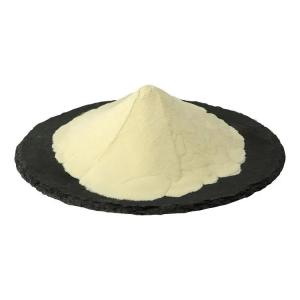News list
News Center
Hot Product
News
Phosphoric acid and its place in dietary guidelines
Time:2025-10-23
1. Introduction
Phosphoric acid is a widely used food additive that serves important roles in flavor enhancement, preservation, and pH regulation. It is particularly common in beverages, processed foods, and certain dairy products. While it has legitimate technological functions in food production, its inclusion in dietary guidelines is approached with caution to promote overall nutritional balance and long-term health awareness.
2. Understanding Phosphoric Acid in the Food System
Phosphoric acid (H₃PO₄) contributes a tangy flavor and helps maintain product stability. It is frequently found in cola-type soft drinks, cheese spreads, and bakery items. Beyond its direct use, phosphorus—an element contained in phosphoric acid—is also naturally present in foods such as meats, fish, grains, and nuts, where it supports essential body functions. However, the difference between natural phosphorus and added phosphates is a key consideration in dietary evaluation.
3. Nutritional Balance and Phosphorus Intake
Dietary guidelines across the world emphasize maintaining a balanced intake of phosphorus. While this mineral is necessary for bone structure, cellular function, and energy metabolism, excessive intake from food additives like phosphoric acid can disrupt the balance between calcium and phosphorus in the body. Therefore, responsible consumption involves monitoring both naturally occurring and added sources of phosphorus.
4. Position in Dietary Recommendations
Most official dietary guidelines, such as those issued by the World Health Organization (WHO) and national nutrition agencies, do not provide a specific daily limit for phosphoric acid itself. Instead, they recommend overall moderation of processed and phosphate-containing foods. This indirect approach highlights the need to reduce excessive additive intake while prioritizing whole foods like fruits, vegetables, and grains that support nutrient equilibrium.
5. Role of Food Manufacturers and Public Awareness
Manufacturers play a vital role in aligning with dietary guidelines by reformulating products to reduce unnecessary phosphate additives. Clear labeling practices and transparent ingredient disclosure enable consumers to make informed choices. Education campaigns and industry cooperation help bridge the gap between production efficiency and nutritional responsibility.
6. Conclusion
Phosphoric acid holds a legitimate place in modern food processing but requires mindful management within dietary frameworks. Current guidelines support its controlled use while emphasizing the importance of balance and moderation. By combining responsible manufacturing practices with public awareness, phosphoric acid can remain a functional additive without compromising nutritional integrity or overall dietary quality.
Phosphoric acid is a widely used food additive that serves important roles in flavor enhancement, preservation, and pH regulation. It is particularly common in beverages, processed foods, and certain dairy products. While it has legitimate technological functions in food production, its inclusion in dietary guidelines is approached with caution to promote overall nutritional balance and long-term health awareness.
2. Understanding Phosphoric Acid in the Food System
Phosphoric acid (H₃PO₄) contributes a tangy flavor and helps maintain product stability. It is frequently found in cola-type soft drinks, cheese spreads, and bakery items. Beyond its direct use, phosphorus—an element contained in phosphoric acid—is also naturally present in foods such as meats, fish, grains, and nuts, where it supports essential body functions. However, the difference between natural phosphorus and added phosphates is a key consideration in dietary evaluation.
3. Nutritional Balance and Phosphorus Intake
Dietary guidelines across the world emphasize maintaining a balanced intake of phosphorus. While this mineral is necessary for bone structure, cellular function, and energy metabolism, excessive intake from food additives like phosphoric acid can disrupt the balance between calcium and phosphorus in the body. Therefore, responsible consumption involves monitoring both naturally occurring and added sources of phosphorus.
4. Position in Dietary Recommendations
Most official dietary guidelines, such as those issued by the World Health Organization (WHO) and national nutrition agencies, do not provide a specific daily limit for phosphoric acid itself. Instead, they recommend overall moderation of processed and phosphate-containing foods. This indirect approach highlights the need to reduce excessive additive intake while prioritizing whole foods like fruits, vegetables, and grains that support nutrient equilibrium.
5. Role of Food Manufacturers and Public Awareness
Manufacturers play a vital role in aligning with dietary guidelines by reformulating products to reduce unnecessary phosphate additives. Clear labeling practices and transparent ingredient disclosure enable consumers to make informed choices. Education campaigns and industry cooperation help bridge the gap between production efficiency and nutritional responsibility.
6. Conclusion
Phosphoric acid holds a legitimate place in modern food processing but requires mindful management within dietary frameworks. Current guidelines support its controlled use while emphasizing the importance of balance and moderation. By combining responsible manufacturing practices with public awareness, phosphoric acid can remain a functional additive without compromising nutritional integrity or overall dietary quality.


 CN
CN





